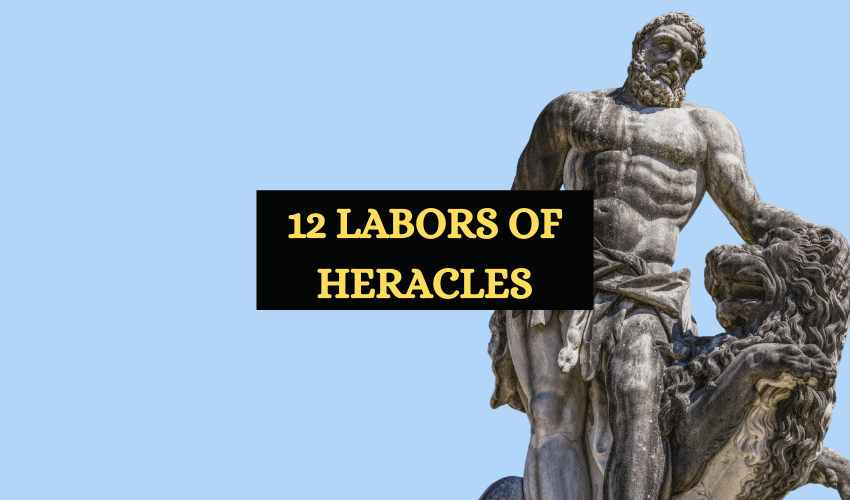
Table of Contents
The Twelve Labors of Heracles (better known by his Roman name Hercules) are among the most famous tales in Greek mythology. Hercules was one of the greatest Greek heroes, born to Zeus, the god of thunder and Alcmene, a mortal princess.
The best known myths involving Hercules are his 12 Labors, comprising twelve impossible tasks given to him by the King of Tiryns, Eurystheus.
What Are the 12 Labors of Hercules?
According to the myth, Hercules once helped the Theban King Creon who was at war with the Minyans. Creon was happy with Hercules and decided to give him his own daughter, Megara, as his bride.
Hera, the wife of Zeus, had a special hatred for Hercules as one of Zeus’ illegitimate children, and had decided to persecute him from birth. As soon as she was able, she sent Lyssa, the goddess of rage and madness, to Thebes to find him. Lyssa drove Hercules insane to the point where he was so overcome by the madness that he killed his own children and as some sources say, his own wife as well.
Hercules was banished from Thebes for these murders. He consulted the Delphi Oracle, seeking counsel as to how to right the wrongs he had committed. The Oracle informed him that he would have to serve King Eurystheus, the king of Tiryns, by doing his bidding for ten years.
Hercules accepted and King Eurystheus sent him to perform twelve difficult feats, which became known as the labors. Unfortunately for Hercules, Hera guided Eurystheus in setting the tasks, making them nearly impossible and even deadly. However, he bravely rose to the twelve challenges.
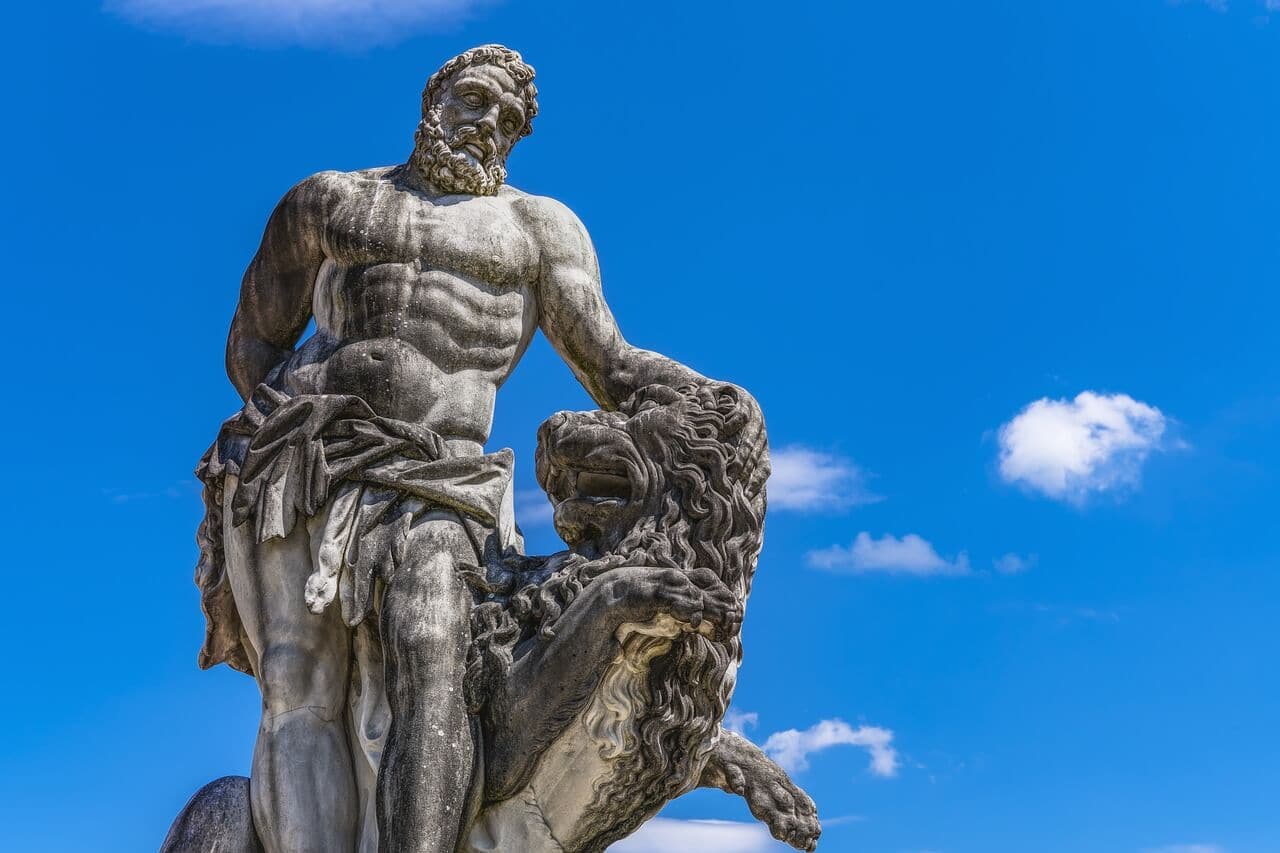
Task #1 – The Nemean Lion
The first task Eurystheus set was for Hercules to slay the Nemean Lion, a terrifying beast with large, bronze claws and skin that was nearly impenetrable. It lived in a cave near the border of Mycenae and Nemea, killing anyone who came near it.
Hercules knew that his arrows would be useless against the Lion because of its tough skin, so he used his club instead to force the beast back into its cave. The Lion didn’t have a way to escape and Hercules strangled the beast to death.
Triumphant, Hercules returned to Tiryns wearing the lion’s skin over his shoulders and when Eurystheus saw him, he couldn’t believe his eyes and hid himself in an enormous jar. Hercules was prohibited from entering the city ever again.
Task #2 – The Lernaean Hydra
The second task Hercules was given was to slay another monster much worse than the Nemean Lion. This time it was the Lernaean Hydra, a large water beast that guarded the gates to the Underworld. It had many heads and every time Hercules cut one of the heads off, two more would grow in its place. To make things worse, the Hydra’s middle head was immortal so there was no way to kill it with a normal sword.
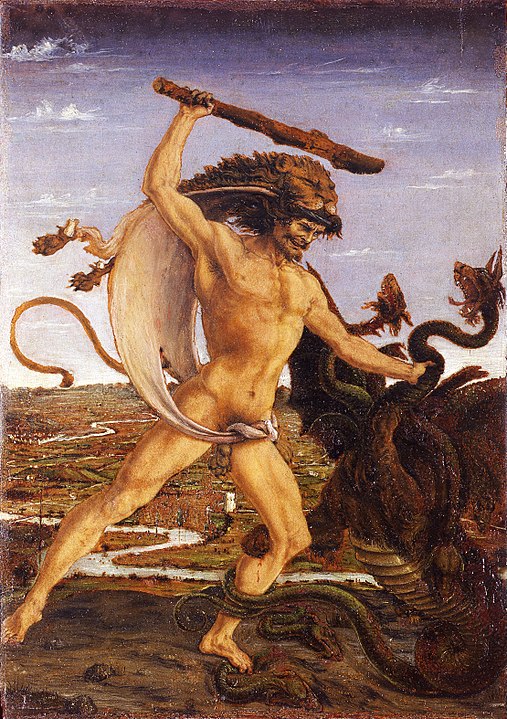
With the guidance of Athena, the goddess of wisdom and battle strategy, and with the help of Iolaus, his nephew, Hercules eventually slayed the beast by using a firebrand to cauterize the neck stumps after cutting off each head. New heads couldn’t grow back and Hercules finally sliced off the beast’s immortal head with the sword of Athena. Once the Hydra was dead, Hercules dipped his arrows into its poisonous blood and kept them for later use.
Task #3 – The Ceryneian Hind
The third Labor Hercules had to perform was capturing the Ceryneian Hind, a mythical animal that wasn’t quite as deadly as the Nemean Lion or the Lernaean Hydra. It was the sacred animal of Artemis, the goddess of hunting. Eurystheus set Hercules this task since he thought that if Hercules caught the beast, Artemis would kill him for it.
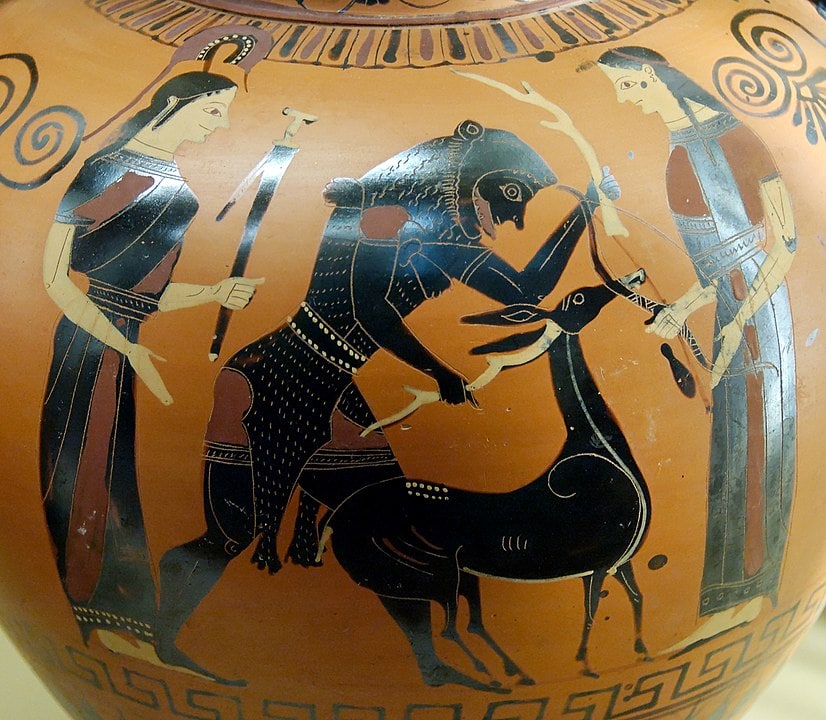
Hercules chased after the Ceryneian Hind for a year after which he finally caught it. He spoke to the goddess Artemis and told her about the Labor, promising to release the animal once the Labor was over and Artemis agreed. Hercules was once again successful.
Task #4- Erymanthian Boar
For the fourth Labor, Eurystheus decided to send Hercules to capture one of the deadliest beasts, the Erymanthian Boar. Hercules visited Chiron, the wise centaur, to ask him how to catch the beast. Chiron adviced him to wait until winter and then drive the animal into the deep snow.
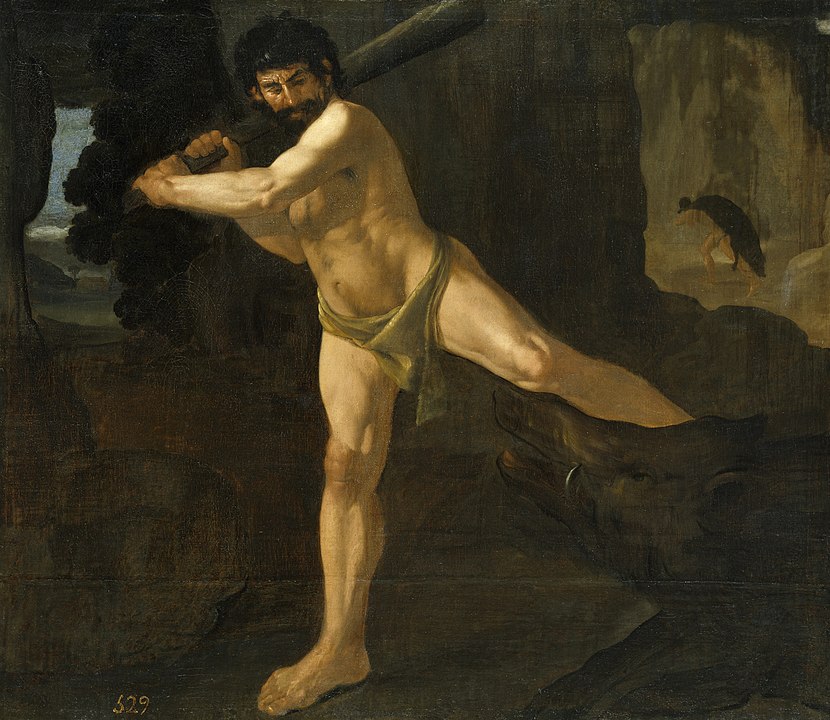
Following Chiron’s advice, Hercules caught the boar quite easily and, binding the animal, he took it back to Eurystheus who was outraged that Hercules had managed to live.
Task #5 – King Augeas’ Stables
Eurystheus was now getting frustrated since all his plans to kill Hercules had failed. For the fifth task, he decided to have the hero clean out King Augeus’ cattle shed. Eurystheus wanted to humiliate Hercules by giving him a task that required him to clean dung and dirt from the cattle shed. It hadn’t been cleaned for thirty years and had about 3000 cattle in it, so the amount of dung that had accumulated was enormous.
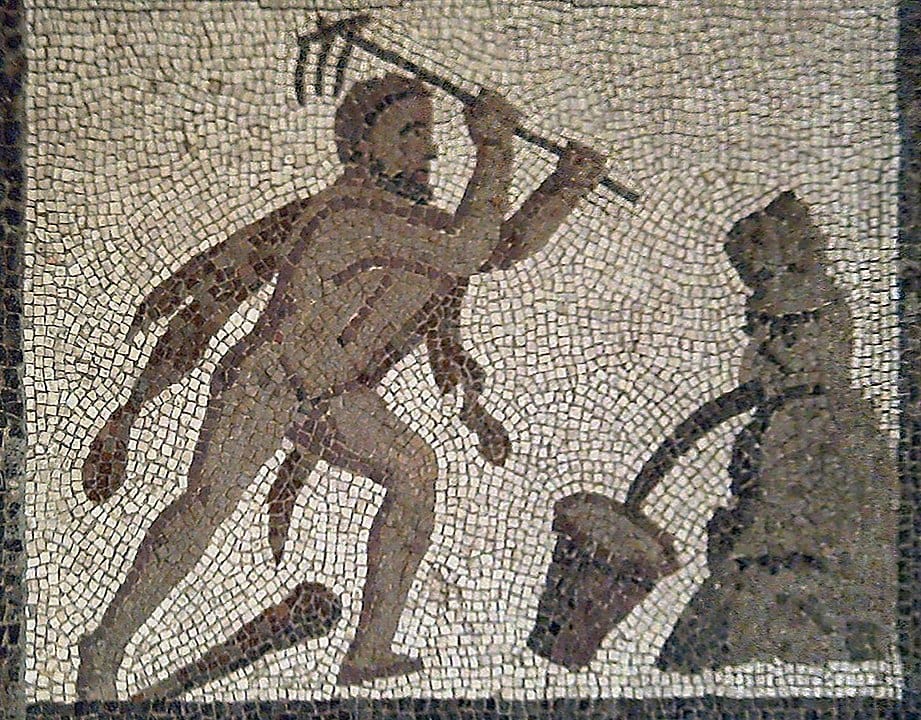
However, Hercules asked King Augeas to pay him for his work, taking thirty days to do the task. He did this by creating a great flood by diverting two rivers to flow through the stables. Because of this, Eurystheus decided that this task didn’t count as a Labor and he gave him another seven Labors to perform.
Task #6 – The Stymphalian Birds
For the six Labor, Hercules had to travel to Lake Stymphalia where there were dangerous man-eating birds known as the Stymphalian Birds. These had bronze beaks and strong feathers that they fired like arrows.
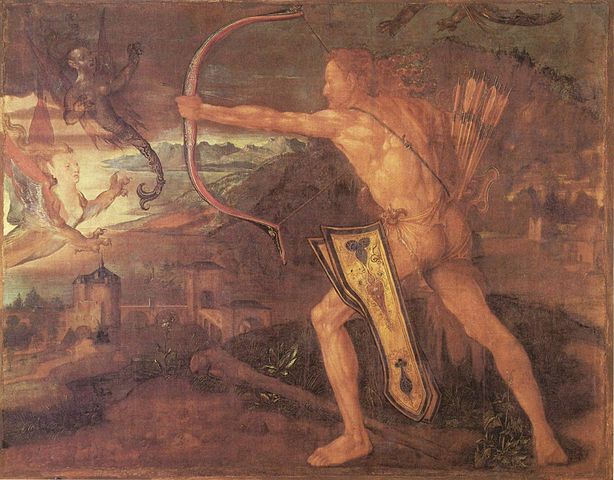
Although the birds were sacred to the god of war, Ares, Athena once again came to Hercules’ aid, giving him a bronze rattle made by Hephaestus. When Hercules shook it, the rattle made so much noise that the birds flew up into the air in fright. Hercules shot as many as he could and the rest of the Stymphalian birds flew away and never returned.
Task #7 – The Cretan Bull
This was the bull that King Minos was to sacrifice to Poseidon, but he neglected to do so and let it run free. It ravaged all of Crete, killing people and destroying crops. Hercules’ seventh Labor was to catch it so that it could be offered as a sacrifice to Hera. King Minos was overjoyed at the prospect of getting rid of the bull and asked Hercules to take the animal away, but Hera didn’t want to accept it as a sacrifice. The bull was released and it wandered off to Marathon, where Theseus later encountered it.
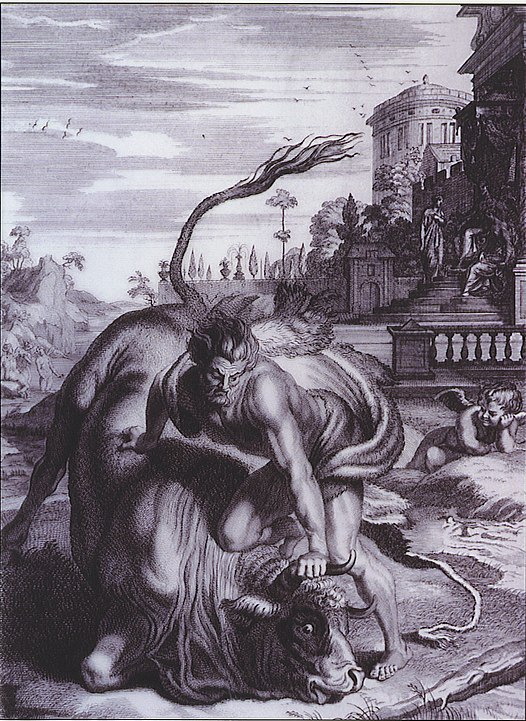
Task #8 – Diomedes’ Mares
The eighth task that Eurystheus set Hercules was to travel to Thrace and steal King Diomedes’ horses. Thrace was a barbarous land and the King’s horses were dangerous, man-eating beasts. By setting him this task, Eurystheus hoped that either Diomedes or the horses would kill Hercules.
According to the myth, Hercules fed Diomedes to his horses after which the animals lost their desire for human flesh. The hero was then able to handle them easily and he brought them back to Eurystheus.
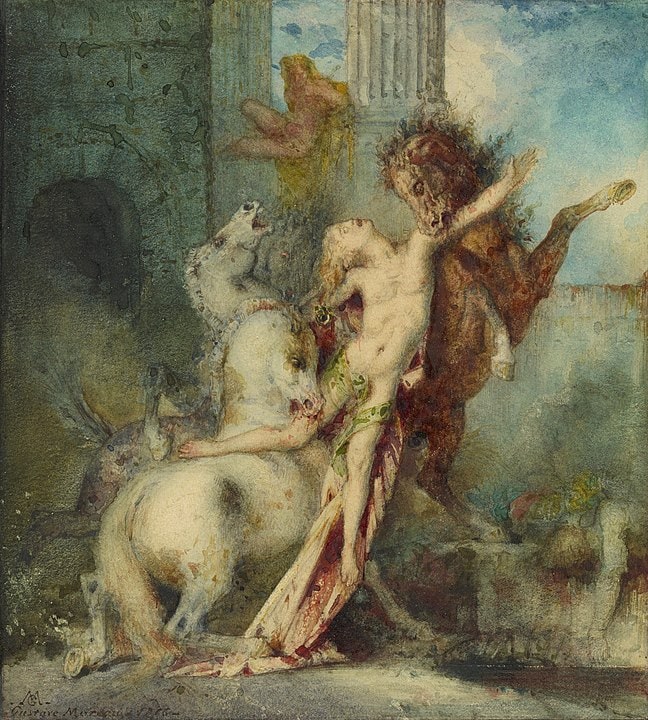
Task #9 – Hippolyta’s Girdle
King Eurystheus had heard of a magnificient girdle the belonged to Hippolyta, the Amazonian queen. He wanted to make a gift of it to his daughter and so Hercules’ Ninth Labor was to steal the girdle from the queen.
This task didn’t prove to be at all difficult for Hercules since Hippolyta gave him the girdle willingly. However, thanks to Hera, the Amazonians thought that Hercules was trying to kidnap their queen and they tried to attack him. Hercules, believing that Hippolyta had betrayed him, killed her and took the girdle to Eurystheus.
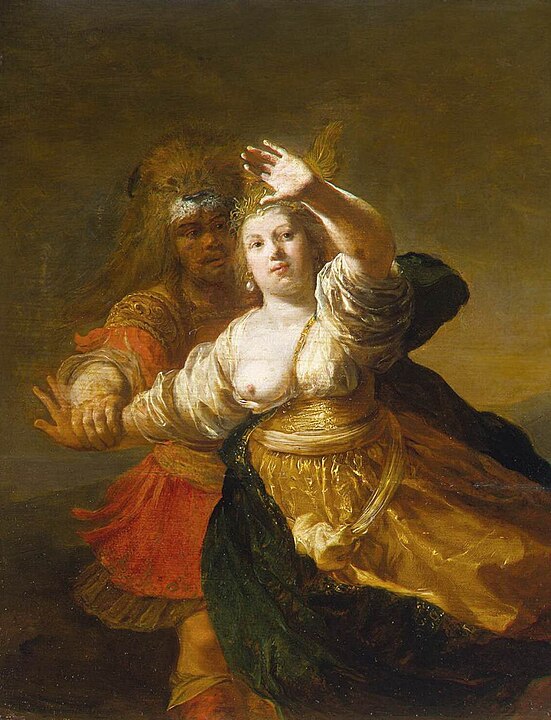
Task #10 – The Cattle of Geryon
Hercules’ tenth Labor was to steal the cattle of Geryon, the giant with three bodies. Geryon’s cattle were well guarded by Orthrus, the two-headed dog, but Hercules killed it easily, using his club. When Geryon came rushing to save his cattle, each of his three bodies carrying a shield, a spear and wearing a helmet, Hercules shot him in the forehead with one of his arrows that had been dipped in poisonous Hydra blood and, taking the cattle, he returned to Eurystheus.
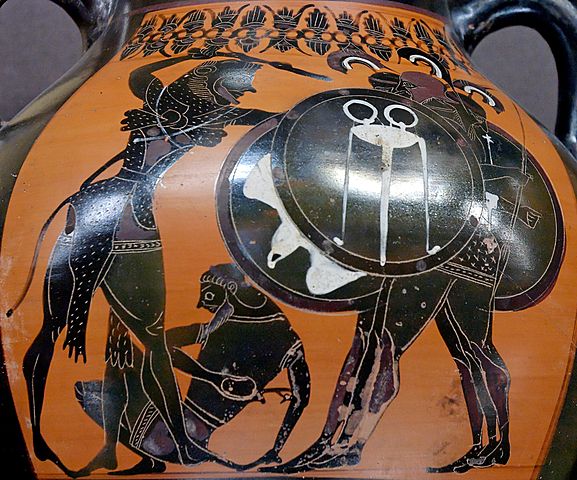
Task #11 – The Hesperides’ Apples
The eleventh task Eurystheus set Hercules was to steal three golden apples from the Hesperides nymphs’ garden which was well protected by Ladon, a terrifying dragon. Hercules managed to overcome the dragon and to get into the garden without being seen. He stole three of the golden apples which he took to Eurystheus who was disappointed when he saw Hercules, as he had thought that Ladon would have killed him.
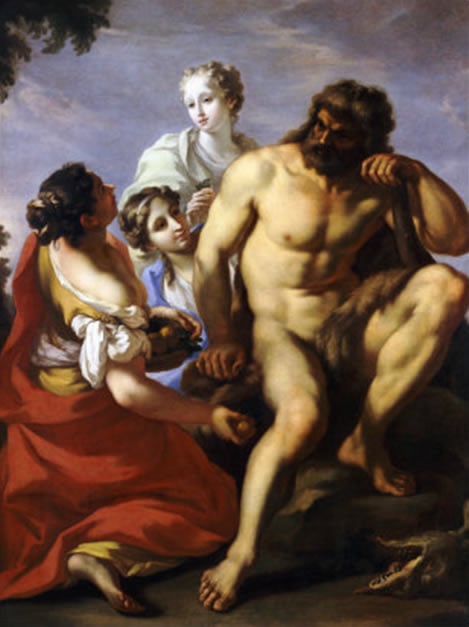
Task #12 – Cerberus
Hercules’ twelfth and last Labor was to bring Cerberus, the three-headed guard dog that lived in the Underworld back to Eurystheus. This was the most dangerous of all the Labors since Cerberus was an extremely deadly beast and capturing it was sure to anger Hades, the god of the underworld. Also, the underworld was no place for living mortals. However, Hercules sought Hades’ permission first and then overpowered Cerberus using his bare hands. When he returned to Eurystheus, the king, who was tired of having all his plans fail, asked Hercules to send Cerberus back to the Underworld, and promised to end the Labors.
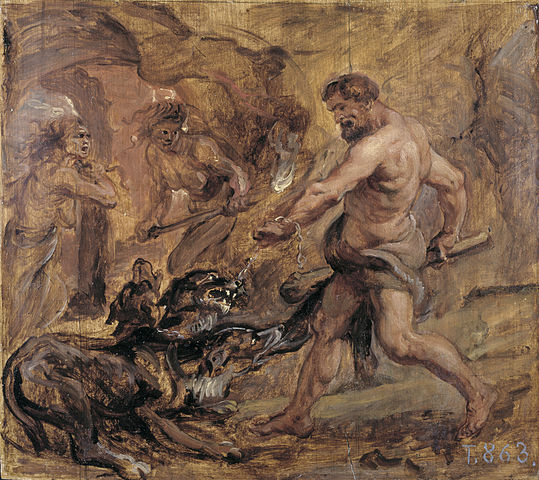
The End of the Labors
Upon completing of all the Labors, Hercules was free from servitude to King Erystheseus and some sources say that he later joined Jason and the Argonauts, helping them in their quest for the Golden Fleece.
In some accounts, it’s mentioned that Hercules went home after completing the Labors and then went mad, killing his wife and children after which he was exiled from the city but others state that this occured before he was given the Labors.
In Brief
The order of the twelve Labors differ according to the source and sometimes, there are slight variations in the details. However, what can be said for certain is that Hercules did manage to successfully complete each and every Labor, for which he gained fame as a Greek hero. The stories about his 12 Labors are now highly popular throughout the world.








